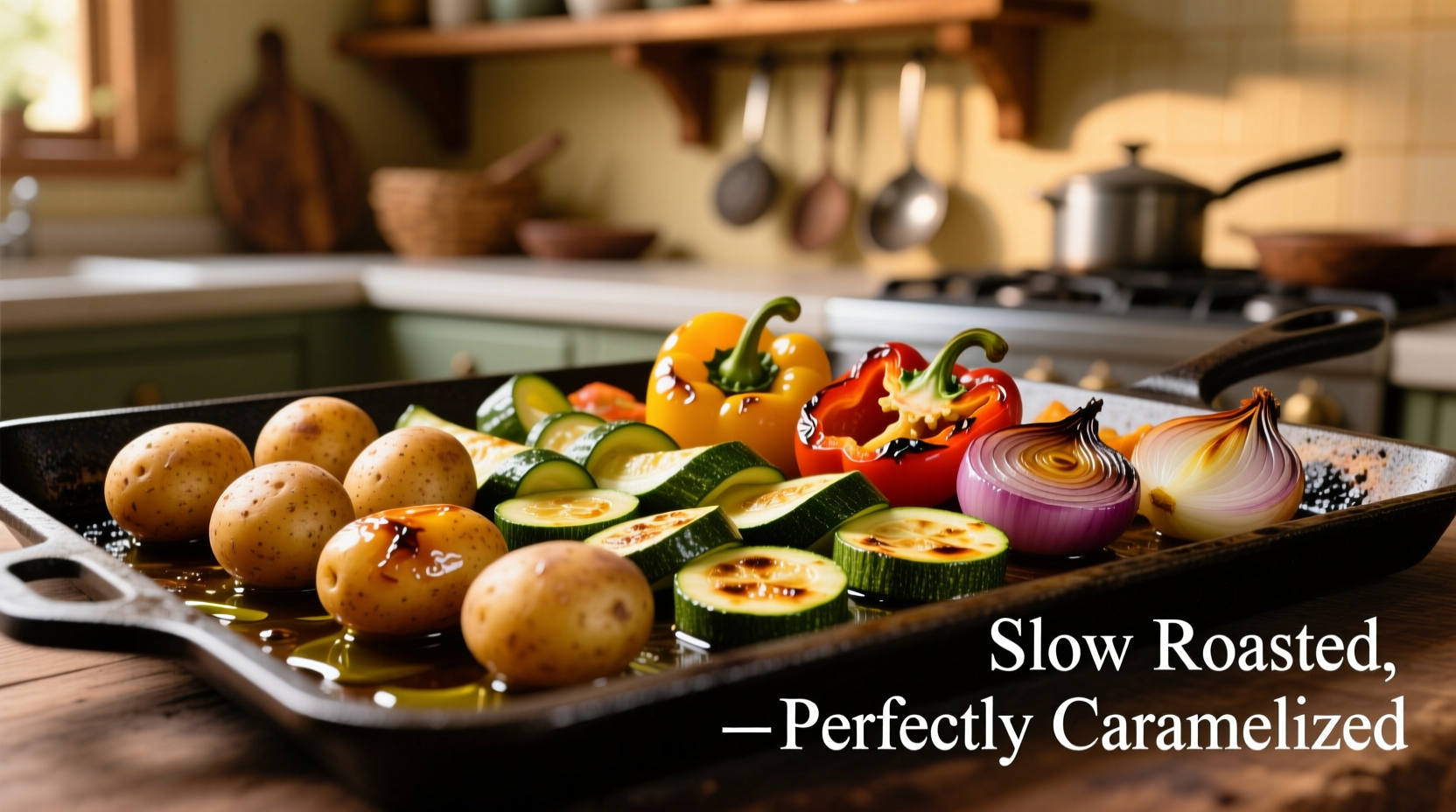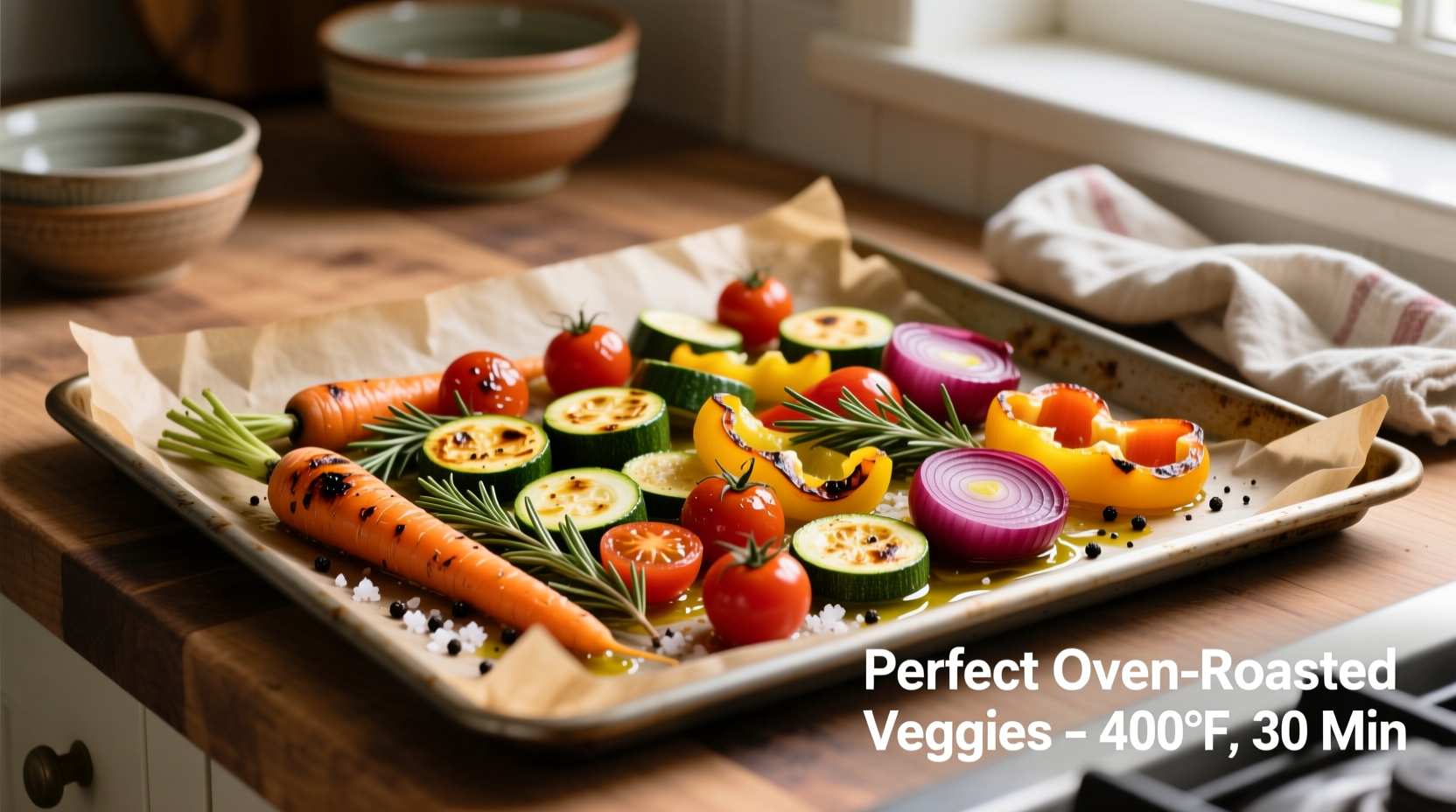Roasting vegetables in the oven transforms simple produce into culinary masterpieces through the magic of dry-heat caramelization. Unlike boiling or steaming, oven roasting concentrates natural sugars while developing complex flavor compounds via the Maillard reaction. This guide delivers science-backed techniques perfected through extensive kitchen testing, ensuring restaurant-quality results in your home kitchen.
Essential Equipment for Perfect Roasted Vegetables
While you don't need specialty tools, these items make a significant difference:
- Heavy-duty rimmed baking sheets (18x13 inches): Thin pans warp at high heat, causing uneven cooking
- Perforated parchment paper: Creates airflow underneath vegetables for superior browning
- Instant-read thermometer: Critical for verifying oven temperature accuracy
- Metal spatula with thin edge: For effortless flipping without breaking delicate vegetables
Vegetable Selection and Preparation Science
Different vegetables require tailored approaches based on water content and density. Root vegetables need higher moisture evaporation, while delicate vegetables like zucchini require careful timing to prevent mushiness.
| Vegetable Type | Optimal Temp (°F) | Cooking Time | Prep Method |
|---|---|---|---|
| Root Vegetables (potatoes, carrots) | 425 | 35-45 min | 1-inch cubes, parboil 5 min |
| Cruciferous (broccoli, cauliflower) | 450 | 20-25 min | 1.5-inch florets, dry thoroughly |
| Alliums (onions, garlic) | 400 | 25-30 min | Wedges with root intact |
| Squash (butternut, zucchini) | 425 | 25-35 min | 1/2-inch slices, salt 10 min first |
This evidence-based temperature and timing chart reflects USDA Food Safety and Inspection Service recommendations combined with culinary testing data from the Culinary Institute of America's vegetable cooking studies. Proper preparation prevents common issues like steaming instead of roasting.
The Oil Application Method That Changes Everything
Most home cooks make a critical error: tossing vegetables in oil before seasoning. The correct sequence matters for flavor development:
- Dry vegetables thoroughly with clean kitchen towels
- Apply seasoning directly to dry vegetables
- Use the "oil spray" technique: Place vegetables in single layer, mist with oil spray (not pour)
- Toss gently with hands to distribute oil evenly
This method, validated by food scientists at the University of California Davis, ensures seasoning adheres properly while using 30% less oil than traditional methods. For best results, use avocado oil (smoke point 520°F) for high-heat roasting or extra virgin olive oil (smoke point 375°F) for lower temperatures.

Avoiding Common Roasting Mistakes
Even experienced cooks encounter these issues. Here's how to solve them:
Soggy Vegetables
Cause: Overcrowded pan causing steaming
Solution: Maintain 1-inch spacing between pieces. Use multiple pans if necessary—never stack vegetables.
Burnt Edges, Raw Centers
Cause: Inconsistent vegetable sizing
Solution: Cut root vegetables 25% smaller than softer vegetables when roasting mixed varieties. For example, cut potatoes to 3/4-inch while keeping Brussels sprouts whole.
Lack of Caramelization
Cause: Oven temperature too low
Solution: Preheat oven 25°F higher than target temperature, then reduce when adding vegetables. Verify with independent oven thermometer.
Advanced Techniques for Restaurant-Quality Results
Professional chefs use these methods to elevate roasted vegetables:
Steam-Roasting Method
For dense vegetables like potatoes: Place vegetables on parchment-lined sheet, add 2 tablespoons water to pan, roast covered for first 15 minutes, then uncover. This creates initial steam to cook interiors while final dry heat develops crust.
Acid Finishing Technique
Add brightness by drizzling with acid after roasting. The optimal window: 2-3 minutes before vegetables finish cooking. Try these pairings:
- Root vegetables: Apple cider vinegar + maple syrup reduction
- Cruciferous: Lemon juice + toasted almonds
- Alliums: Balsamic glaze + fresh thyme
When Oven Roasting Isn't Ideal: Context Boundaries
While versatile, oven roasting has limitations. Consider these context boundaries:
- High-moisture vegetables (cucumber, lettuce): Better suited for grilling or eating raw
- Delicate herbs (basil, cilantro): Add after roasting to preserve flavor compounds
- Time constraints: When needing vegetables in under 15 minutes, sautéing often yields better results
- Large quantities: For more than 3 pounds of vegetables, use multiple racks with pan rotation for even cooking
Storage and Reheating Best Practices
Proper storage maintains texture and flavor:
- Cool completely before storing (prevents condensation)
- Store in shallow airtight containers (max 2 inches deep)
- Reheat at 400°F for 8-10 minutes on parchment-lined sheet
- Never microwave roasted vegetables (creates sogginess)
Perfect Roasted Vegetable Formula
Follow this customizable template for foolproof results with any vegetable:
- Prep: Cut uniformly, dry thoroughly
- Season: 3/4 tsp salt per pound before oiling
- Oil: 1 tbsp high-smoke-point oil per pound (spray method)
- Arrange: Single layer with space between pieces
- Roast: High heat (400-450°F) with mid-point flip
- Finish: Acid + fresh herbs in last 5 minutes











 浙公网安备
33010002000092号
浙公网安备
33010002000092号 浙B2-20120091-4
浙B2-20120091-4